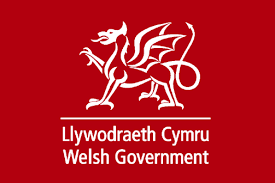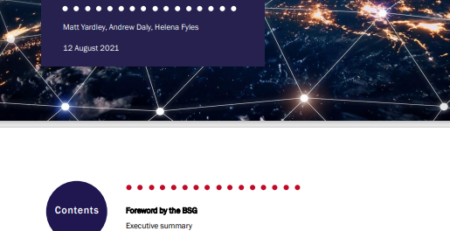Digital Confusion
The Digital Britain Report was finally released on Tuesday, and despite the build up, reactions to it have been mixed and, particularly where the broadband measures are concerned, somewhat confused. (Although given that few journalists would have had time to read the 240 page report before filing their copy, this level of confusion is perhaps excusable.)
The national media have been critical of a ‘broadband tax’ and questioned the logic of whether broadband for all is an appropriate policy goal; the public are confused about what exactly the proposals are; and even rural fibre advocates appear displeased.
Here we will attempt to unravel the ideas set out by Lord Carter. The report sets out two strands to government’s approach to broadband infrastructure.
First, the universal service commitment will ensure that every household has access to a 2Mbps service by 2012. This will be paid for using funds left over from the Digital Switchover Help Scheme, a contribution from the government’s Strategic Investment Fund, and contributions from the private sector and other public organisations.
This will be delivered by a range of solutions: in some cases a simple improvement in home wiring will be sufficient; others may require wireless technologies such as satellite; and others may require new fibre infrastructure.
Second, the Final Third Project aims to ensure next generation broadband coverage to at least 90% of households by 2017. It is called the Final Third Project as cost modelling suggests that the market should deliver next generation broadband to two-thirds of UK households, mainly in the most densely populated areas of the UK. The project would support rollout to the final third of homes unserved by the market.
It seeks to do this by providing a subsidy in those areas where the high costs of deployment make commercial investment difficult. The subsidy should bring the cost of deployment down to the cost in urban areas, at which point the investment should be commercially viable. This will be paid for by a 50p a month levy on all fixed lines (including DSL and cable) that will go into a Next Generation Fund, which would raise around £150m per year.
These two policies (the universal service commitment and the Final Third Project) will work together to ensure that the most appropriate solutions are developed in each case. For example, in the report the government sets out that the universal service commitment may have to use a fibre to the cabinet solution as the most cost-effective and efficient solution for around 420,000 homes – delivering on both the universal service and Final Third goals.
The benefits of ensuring everyone has access to superfast broadband will be substantial: supporting rural businesses, particularly SMEs; strengthening communities; and enabling genuine transformation of public services in areas where it could make the most impact. A failure to act risks leaving behind remote, rural and even some suburban communities as the UK moves into a 21st century global digital economy.
It is important to emphasise that this is not simply about providing next generation broadband in deep rural areas, however. As the map below demonstrates, the benefits would be felt across the UK (the areas in green will likely see investment by the market; those areas in yellow and red are likely to require support from the proposed Next Generation Fund).
This is a challenge that governments around the world are attempting to address, and a variety of solutions have been proposed, usually involving large scale government funding. We feel that this approach is a forward-looking solution in that it is targeted, proportionate, and smart.
It is targeted as the subsidies are aimed at those areas that require them because they are currently unattractive to investors. Blanket subsidies end up subsidising deployments that the market would have made anyway, wasting valuable public resource.
At the same time, the subsidy itself is proportionate, in that it is at the right level to be able to tip the balance in favour of investment in many areas, without crowding out private investment.
Finally, payment through a levy is smart in that it places no further burden on the UK’s already-strained public finances, and the level of the levy, at the price of a cinema ticket a year, is comparatively cheap compared to the level of taxpayer funding found in other markets.
As with all of these ideas, however, the devil will be in the detail. There will be a need to ensure that the proposal doesn’t favour any one operator; that it leads to open access networks; that it is technology neutral; that it is properly targeted at areas that genuinely need subsidy; that it has no negative impact on broadband take-up; and that an appropriate role and remit is set out for the design group charged with structuring the and delivering both the Final Third Project and the universal service commitment. Government will consult on these and other issues in the autumn.
It is perhaps worth considering that ultimately consumers will pay for this investment one way or the other, whether through higher prices for current broadband, through general taxation, or through the proposed levy, which is perhaps more transparent than funding from general taxation.
Many governments have committed to expansive public projects, using significant levels of public funding.
– The Australian government is committed to a A$43bn (£21bn) fibre to the home project to 90% of the population, with 12Mbps to the remaining 10%.
– New Zealand are spending NZ$1.5bn (£0.6bn) of public money on fibre to the home to 75% of the population.
– Singapore have committed public funds of $0.75bn (£0.46bn) to their fibre to the home project.
– In the EU, Finland and Greece have both recently proposed spending significant levels of public money on superfast broadband.
On a per home basis, the UK’s commitment is one of the cheapest of those made across the world, demonstrated below (note: the US intervention is mainly to expand coverage of current generation broadband).
During the height of the economic stimulus discussions late last year superfast broadband networks were touted by many commentators as one of the best infrastructure investments to make – the Keynesian solution for the 21st century.
Now that government has accepted its importance and made a commitment to ensuring coverage of superfast broadband for at least 90% of households, ire has turned towards how it is to be funded.
However, it is not possible to have our cake and it eat it. Funding and investment will ultimately come from us as consumers in one way or another if we are to deliver this critical enabling infrastructure for the entire UK.
Peter Shearman, Policy Manager, BSG





